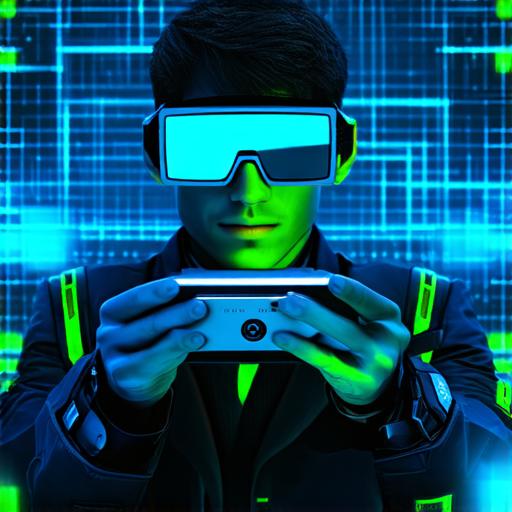Introduction
Augmented reality (AR) is becoming increasingly popular in various industries such as gaming, education, and healthcare. AR technology enhances the user’s experience by overlaying digital objects onto the real world. As an AR developer, it’s essential to understand how to configure AR to deliver a seamless experience to your users. In this article, we will explore the basics of AR configuration and provide tips and best practices for developing engaging AR applications.
AR Development Basics
Before diving into AR configuration, it’s important to have a basic understanding of AR development. AR technology requires three main components:
- A device such as a smartphone or tablet with an AR-compatible camera.
- AR software that captures and displays digital objects in the real world.
- Content creation tools for designing and developing digital objects to be overlaid onto the real world.
AR Development Tools
There are several AR development tools available to help you create engaging AR applications. Some of the popular AR development tools include:
- Unity: A versatile game engine that supports AR development and has a large community of developers.
- Vuforia: An AR software platform that allows you to create interactive experiences for mobile devices.
- ARKit: Apple’s AR development framework for iOS devices.
- Snapchat Lens Studio: A tool for creating AR lenses for the popular social media platform, Snapchat.
- Aurasma: An AR software platform that allows you to create interactive experiences for mobile devices and web browsers.
AR Configuration Techniques
Now that we have a basic understanding of AR development tools, let’s explore some configuration techniques for developing engaging AR applications.
Understanding User Interface (UI) Design
UI design is critical in AR development as it determines how users interact with the digital objects overlaid onto the real world. It’s essential to create a user-friendly interface that allows users to navigate through the AR experience seamlessly.
- Keeping the UI simple and intuitive
- Using clear and concise labels for buttons and menus
- Ensuring that the UI elements are easily accessible and visible
- Providing feedback to users when they interact with the digital objects
Tracking and Positioning
AR applications require accurate tracking and positioning of the digital objects in the real world. This is achieved through the use of sensors, cameras, and other tracking technologies.
- Using multiple tracking sources to ensure accuracy
- Ensuring that the tracking system is robust and reliable
- Optimizing the application’s performance by reducing the number of objects being tracked
- Testing the application in various environments to ensure consistency
Lighting and Texture Mapping
AR applications require accurate lighting and texture mapping to create a realistic experience for users.
- Using realistic lighting models to simulate natural light sources
- Ensuring that the textures are high-quality and accurately mapped onto the digital objects
- Using 3D scanning and modeling techniques to create highly detailed and accurate digital objects
Performance Optimization
AR applications require optimization to ensure a seamless experience for users.
- Reducing the number of polygons in the 3D models to reduce processing power requirements
- Compressing textures and other assets to reduce file sizes
- Using efficient rendering techniques to optimize performance
User Testing and Feedback
Finally, it’s essential to test your AR application with real users and gather feedback to improve the user experience.
- Conducting user tests to identify areas of improvement
- Gathering feedback from users through surveys or focus groups
- Continuously iterating on the design based on user feedback
Summary
Configuring AR is a complex process that requires careful planning, development, and testing. By following the best practices outlined in this article, you can create engaging AR applications that deliver a seamless experience to your users. Remember to keep the UI simple and intuitive, optimize performance, use realistic lighting and texture mapping, and gather user feedback to improve the user experience. With these tips, you’ll be well on your way to developing successful AR applications.

